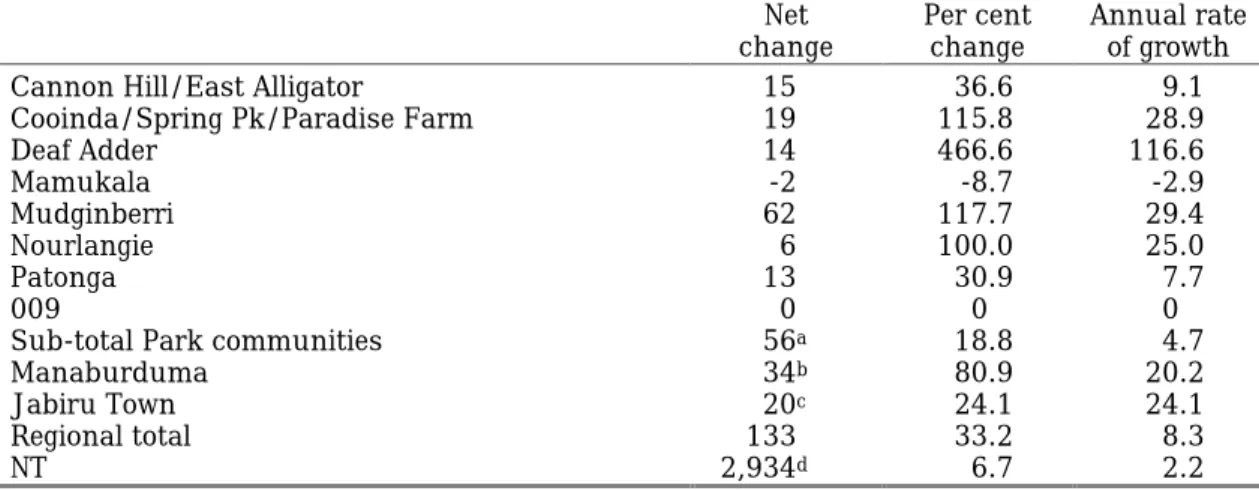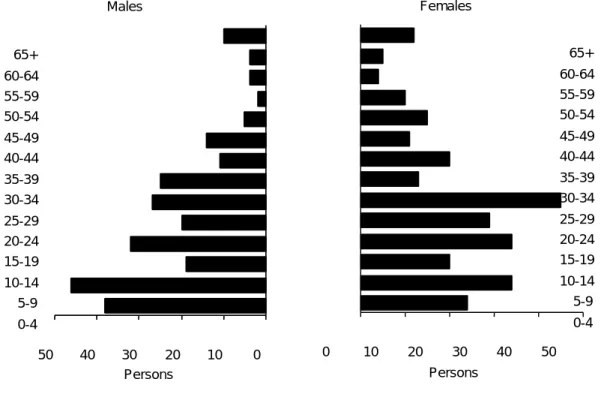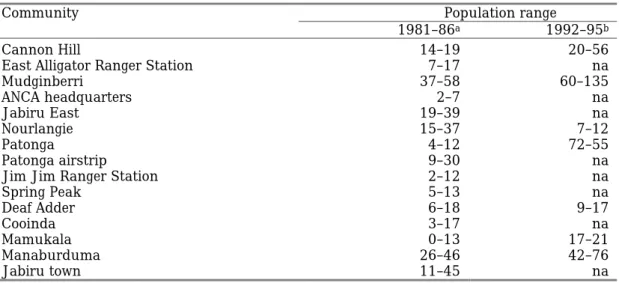This study was deliberately structured (through an Aboriginal project committee) to ensure Aboriginal control over key aspects of the research process and to maximize Aboriginal community involvement. Finally, the issue of the socio-economic status of Aboriginal people in Kakadu remains politically, economically, culturally and politically important, as demonstrated for example by the UNESCO Kakadu Mission a year ago.
Scope and conduct of the analysis
All of these data sources have their drawbacks in terms of providing a meaningful representation of the social and economic status of Aboriginal people in the park. However, for comparisons of the social and economic characteristics of Indigenous and non-Indigenous populations, data on habitual residence in a tourist destination such as Kakadu is essential.
A demographic profile of Aboriginal people in the Kakadu region
Given the continued growth in the number of Aboriginal ordinary residents in the meantime, the Aboriginal proportion of the de jure population of Jabiru has increased to 13 percent. A few (11 percent) were still recorded inside the Park but in a different location, while more than one-third (38 percent) were recorded in a location outside the Park.
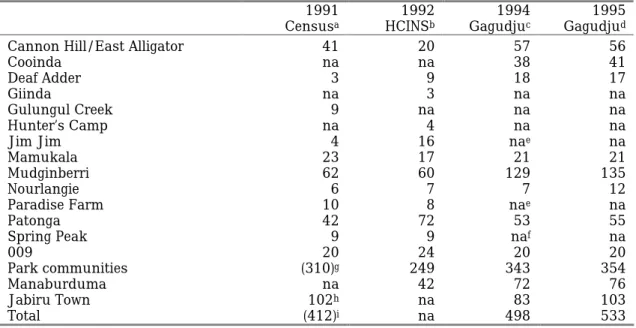
Labour force status
The first point to note is that employment in the Kakadu region is dominated by non-Aboriginal people. This gave an overall Aboriginal employment/population ratio of 29.3, which was identical to the rate for Aboriginal people generally in the NT, but somewhat higher than for the Jabiru ATSIC Regional Council area (24 per cent). According to the census, there were no unemployed Aboriginal people in the Kakadu region in 1991.
Since 1991, a number of developments have occurred in the region with potential consequences for the level of Aboriginal employment. The lack of improvement in the proportion of working-age people in employment is a microcosm of the mainstream labor market situation reported for Aboriginal people in Australia as a whole during the 1990s (ABS/CAEPR 1996), and is a problem only was relieved by participation in the Community Development Employment Projects (CDEP) scheme (Taylor and Roach 1998). Both of these figures are significantly above the unemployment rate of 36.6 per cent recorded in the same year for Aboriginal people in the Northern Territory as a whole (ABS 1994: 49).
This shows the number of Aboriginal men and women in the Jabiru postcode area by duration of unemployment at the end of September 1996. If the definition of local is limited to traditional owners only, as in the Kakadu National Park Agreement, then 82 per cent of the Aboriginal workforce at the mine can be said , that it originates from elsewhere.
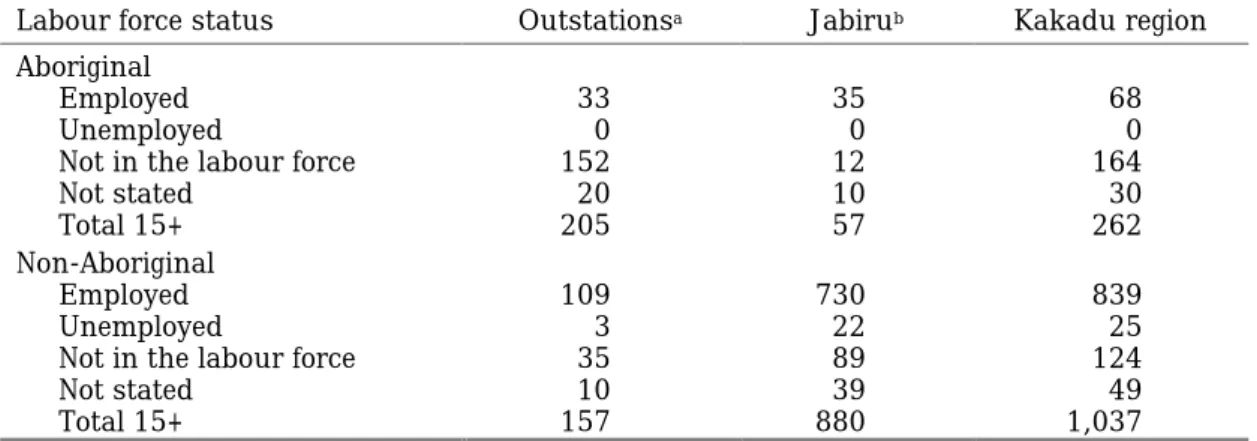
Income status and welfare
It is also clear that there is a highly polarized income distribution in Jabiru, which is likely to reflect the gap between the residents of Manaburduma and those in the suburbs. In the Kakadu region, however, there are a number of subsidized arrangements to offset these costs. Also, members of the Gagudju association are all co-owners of two hotels and other amenities in the region.
For a further sense of relativity, it is interesting to place these results in the wider regional context of the Jabiru Regional Council ATSIC area, where the average annual Aboriginal income of $8332 was very close to the figure for Kakadu outstations. As with most official data, these figures provide only a partial indication of the economic status of Aboriginal households in the region. In the Kakadu region as a whole, this urban-rural gap is evened out and only 51 per cent of total income comes from employment, which is very similar to the figure of 49 per cent recorded in the 1991 census of Aboriginal people in the NT as a whole (Taylor 1994: 17). but less than the figure of 54 percent recorded in 1981 (Stanley 1981: 43).
To make it more comparable to the situation in the Kakadu region, which does not yet have a CDEP scheme, the employment share of total income in the Jabiru Regional Council figure was as low as 15 per cent if income from CDEP as non-employment income. Young to middle-aged adults in the age group 18–39 years are the main recipients of the latter two payments.
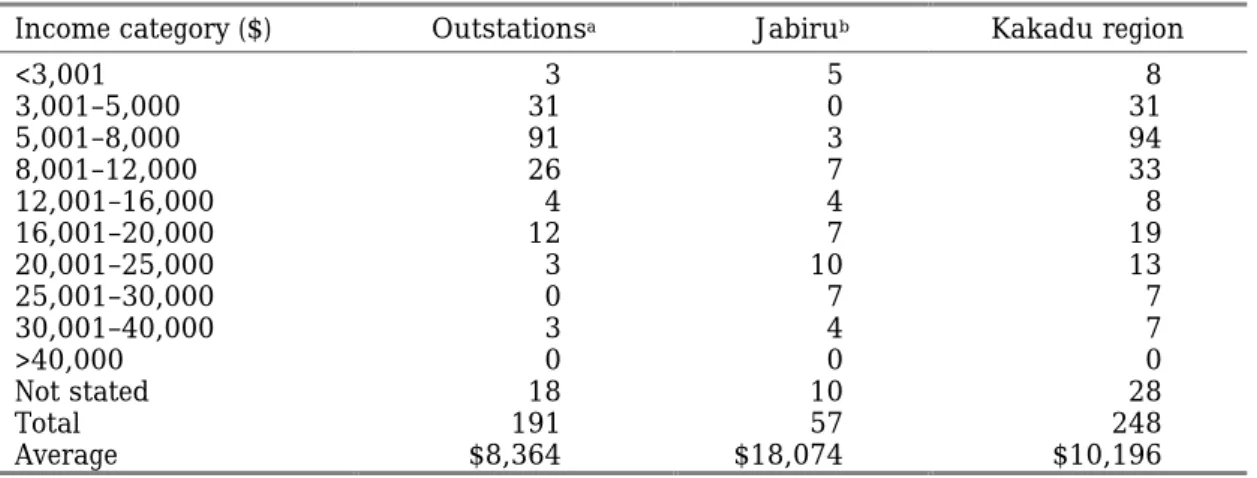
Education: participation and outcomes
The Aboriginal proportion of total enrollments in the school and in each of these grades is shown in Table 5.4. However, the actual attendance rate for Jabiru was only 80 percent, yielding only 270 students. Thus, at Jabiru School a total of 20 Aboriginal students in the age group 11–16 years were enrolled in 1995 and of these 12 (60) per cent) were tested for numeracy and literacy skills.
Of the 12 Aboriginal students in Jabiru who were tested, participation at each level of the maths test was well above the system average, with 100 per cent tested at Years 3 and 4 and 92 per cent tested at Level 5. year. . In non-urban schools, test participation was generally high up to Year 3 level, but only 83 per cent attempted the Year 4 level and just over half (57 per cent) at Year 5 level. Just over half of Jabiru's pupils (58 per cent) sat the Year 2 level check, while over two-thirds attempted Year 3 and Year 4 level questions.
It should be noted that in tests at all levels, students in Jabiru answered a higher proportion of questions correctly compared to their counterparts in non-urban schools. For example, in 1995 the average level of achievement in remote Aboriginal schools in the NT for students aged 11 to 16 was Year 3 (Northern Territory Legislative Assembly 1996: 13).
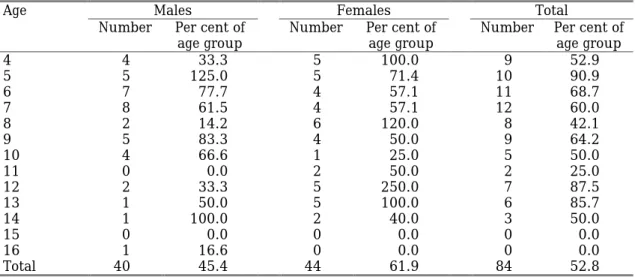
Housing and infrastructure
If these are added to the equation, then the average number of people per dwelling is reduced to 5.5 with three quarters of the population living in either a shelter or a house in need of repair. Compiling a true picture of the available housing stock is complicated by ANCA's housing provision. Three communities - Mudginberri, Manuburduma and Cannon Hill/East Alligator - stand out as having significant overcrowding, measured by the average number of persons per dwelling, but particularly by the average number of persons per house.
For example, a 1994 survey of 11 randomly selected dwellings at Patonga, Mamukala and Mudginberri by the Northern Territory Department of Health and Community Services (Environmental Health Officer Report on Jabiru Outstations, 14 November 1994) found that overcrowding remained a key health concern with implications for the spread of scabies, respiratory and enteric diseases. The Gagudju Health team also cites a need for reorientation of local administration and planning of housing and infrastructure in a way that will place emphasis on improving environmental health outcomes. The next largest lease was held by the Northern Territory Housing Commission (20 percent) and Environmental Research Institute of the Supervising Scientist (11 percent).
However, this situation can be significantly aggravated at times by the influx of visitors, mainly from the West Arnhem region, but also from places in the Park such as Mumakala and Mudginberri. A proposal suggested by the Kakadu/West Arnhem Housing and Infrastructure Group to help overcome this is to provide an Aboriginal hotel at Jabiru to meet the needs of short-term visitors.

Health status
It is also consistent with 1994 NATSIS data showing that in the ATSIC Regional Council area of Jabiru, 22 percent of the population reported one or more long-term illnesses and 14 percent had been hospitalized in the previous two weeks . prior to the investigation (ABS 1996d: 17-18). An indication of the age pattern of serious morbidity is given in Figure 7.1, which shows the average number of hospital admissions for each five-year age group over the period 1992-1995. However, this percentage falls again in the first years of old age and then, not unexpectedly, rises to more than 50 percent at a very advanced age, above 65 years.
The other leading cause of hospitalization identified in the data is injury and poisoning (category 17). In infants, morbidity is primarily due to conditions originating in the perinatal period, as well as infectious diseases and diseases of the respiratory system. During the primary and secondary years, the pattern of morbidity changes with less emphasis on infectious diseases and more on injuries and poisonings, as well as diseases of the circulatory system and skin diseases.
In adulthood to middle age, childbirth is the predominant cause of hospitalization followed by a fairly high rate due to injuries and poisonings. In old age, by far the most prominent cause of major morbidity are diseases of the respiratory system, followed again by injuries and poisoning.
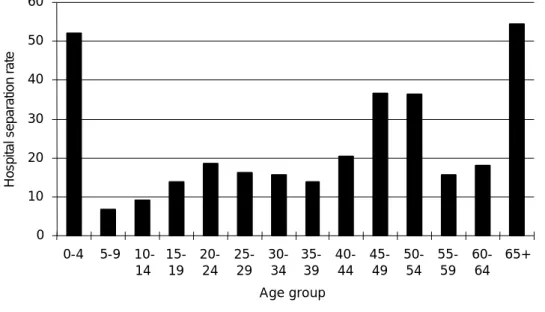
Conclusion
Aborigines, Tourism and Development: The Northern Territory Experience, Northern Australia Research Unit, Australian National University, Darwin. Gagudju Association Review (Phase 2): Structural, Statutory, Economic and Policy Considerations, unpublished report, Center for Aboriginal Economic Policy Research, Australian National University, Canberra. Potential economic impacts of mining and tourism in the Kakadu Conservation Area on Aboriginal people, unpublished report, Center for Aboriginal Economic Policy Research, Australian National University, Canberra.
Jones (ed.) Northern Australia: Options and Implications, Research School of Pacific Studies, The Australian National University, Canberra. Graham (eds) Kakadu: Natural and Cultural Heritage and Management, Australian Conservation Agency and Northern Australia Research Unit, The Australian National University, Darwin. Ethnographic perspectives on the enumeration of Aboriginal people in remote Australia', Journal of the Australian Population Association.
Altman (red.) A National Survey of Indigenous Australians: Options and Impplications, Center for Aboriginal Economic Policy Research, The Australian National University, Canberra. Loveday (red.) Service Delivery to Remote Communities, North Australia Research Unit, The Australian National University, Darwin.
